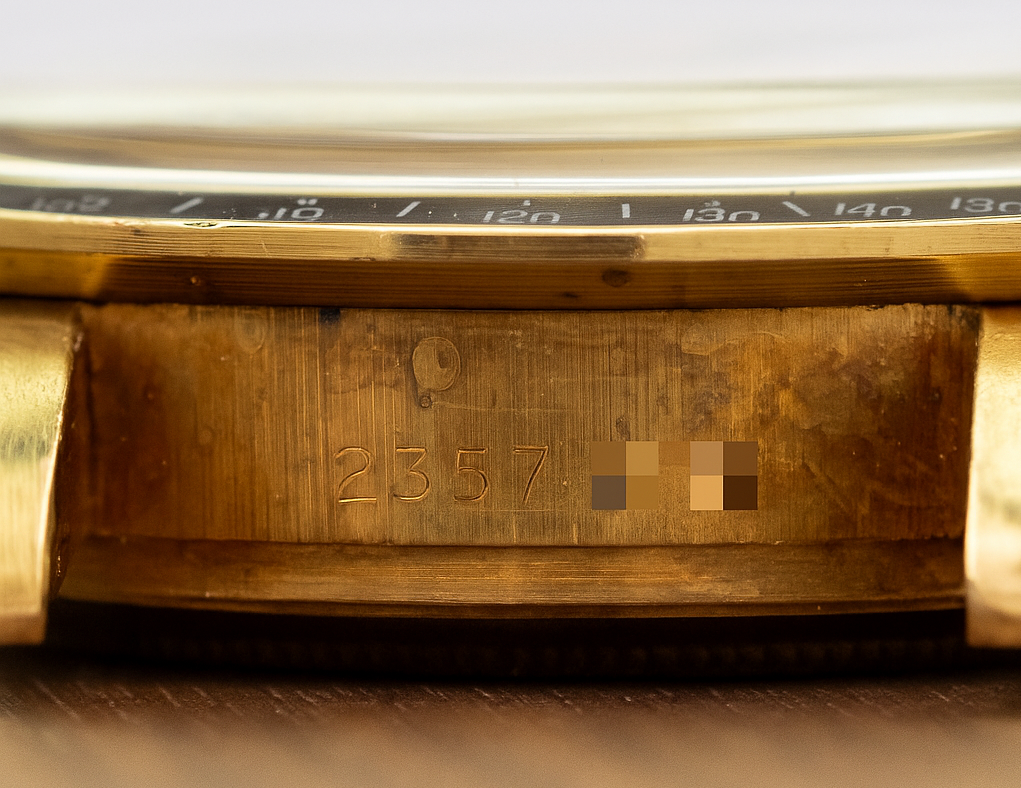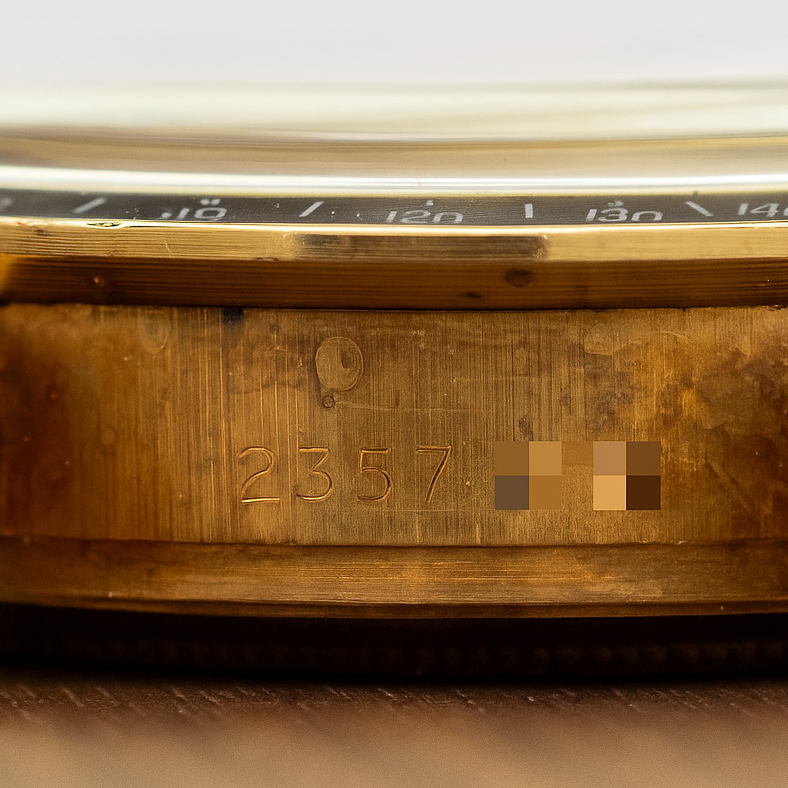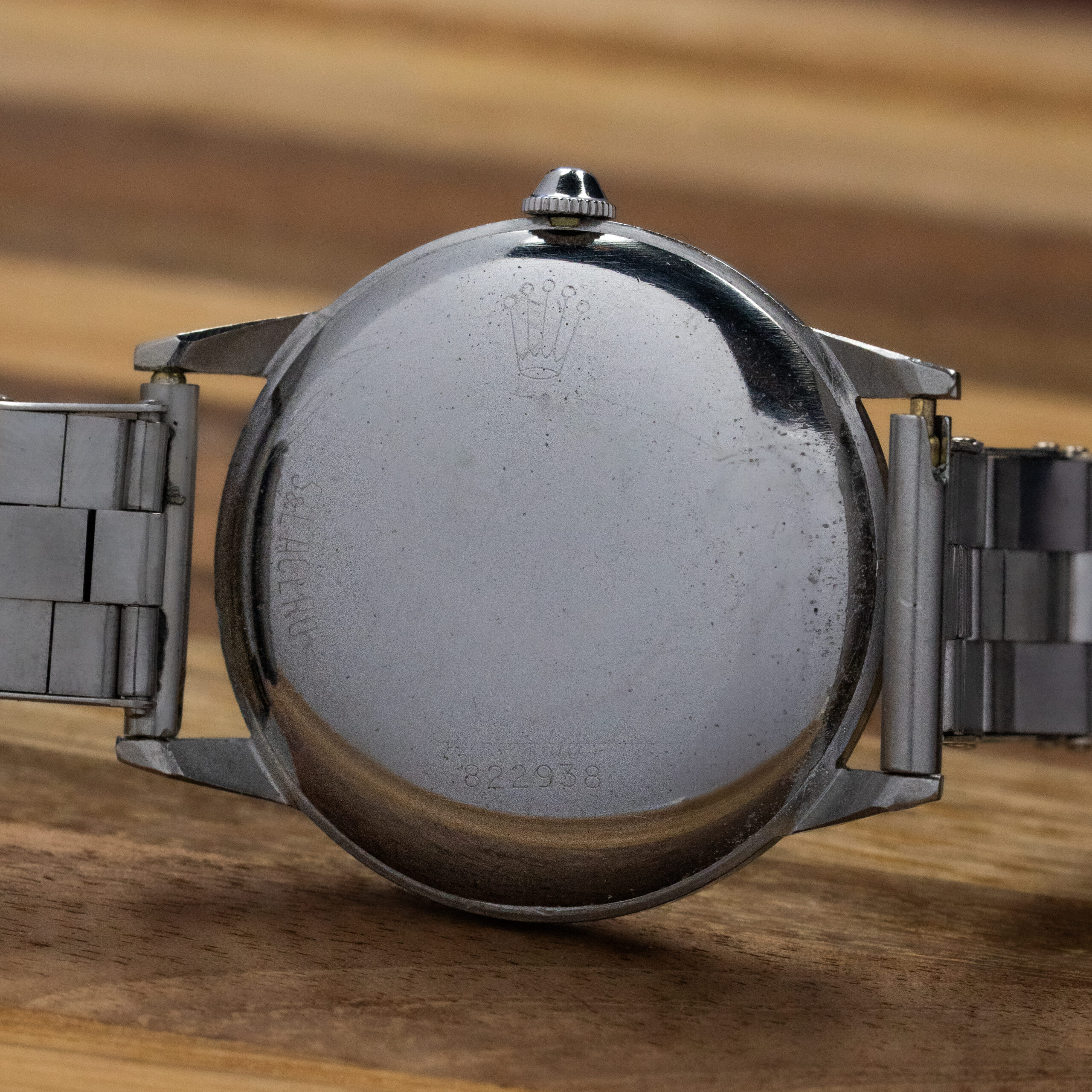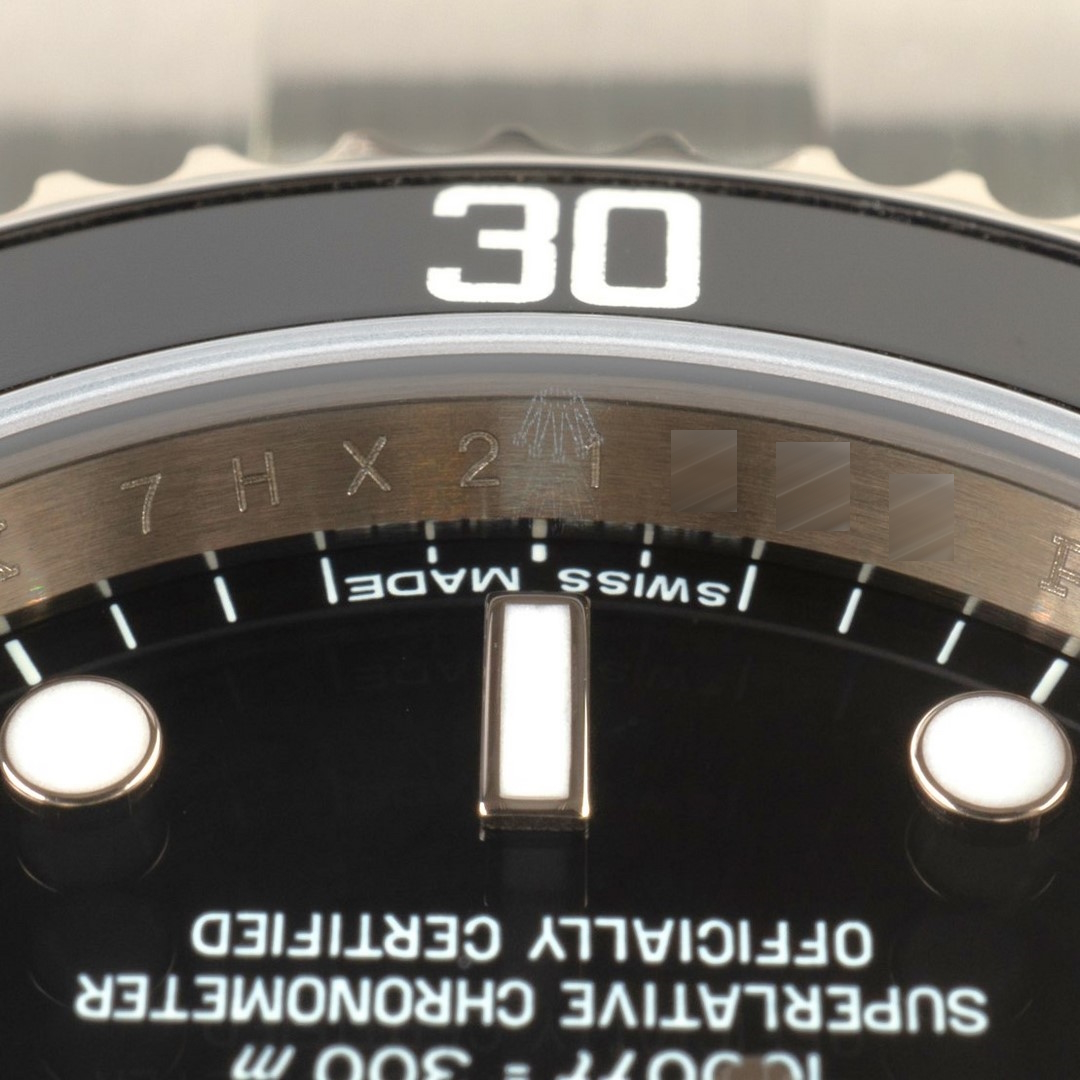
Rolex Serial numbers
What does the Serial Number say about your Rolex?
Dating a Rolex watch by its serial number is a useful way to estimate production year. This guide provides a detailed serial number-to-year reference chart, explains changes in Rolex’s numbering system, shows where to find the serial on different models, and discusses service replacement cases. The goal is an easy-to-follow, expert-level reference for casual readers and collectors alike.
How to Find the Serial Number on a Rolex
Before you can date a Rolex, you need to locate its serial number. The location varies by model and era:
- Vintage Oyster-Cased Models (pre-2005): The serial number is engraved on the case between the lugs at the 6 o’clock position (i.e. on the side of the case between the bracelet attachment points). You’ll need to remove the bracelet to see it.
- Non-Oyster Models (Older Dress Watches & Others): On some vintage Rolex models that do not use the waterproof Oyster case, the serial number may be found on the case back instead of between the lugs. Often it is engraved on the outside of the back, or sometimes stamped on the inside of the case back.
- Modern Rolex (mid-2000s to Present): Starting around 2005, Rolex began engraving the serial on the inner rehaut (the reflective ring between the dial and crystal) at the 6 o’clock position. From 2005–2007 Rolex actually put the serial in both places (between the lugs and on the rehaut), but by 2008 they stopped engraving the exterior lug area. All contemporary models now show the serial number only on the rehaut.



Rolex Serial Numbers and Production Years
Every Rolex is engraved with a ‘unique’ serial number, which (in most eras) can be used to estimate its production year. Below is a detailed chart of Rolex serial numbers vs. production dates. Keep in mind these are approximations compiled by collectors, since Rolex does not publish official serial/year data. Nonetheless, it’s an excellent tool for dating your watch.
| Year | Serial or Prefix |
|---|---|
| 1927 | 20190 |
| 1928 | 23969 |
| 1929 | 28290 |
| 1930 | 29312 |
| 1931 | 29312 |
| 1932 | 29312 |
| 1933 | 29933 |
| 1934 | 30823 |
| 1935 | 34336 |
| 1936 | 36856 |
| 1937 | 40920 |
| 1938 | 43793 |
| 1939 | 71224 |
| 1940 | 99775 |
| 1941 | 106047 |
| 1942 | 143509 |
| 1943 | 230878 |
| 1944 | 269561 |
| 1945 | 302459 |
| 1946 | 367946 |
| 1947 | 529163 |
| 1948 | 628840 |
| 1949 | 668503 |
| 1950 | 695134 |
| 1951 | 709249 |
| 1952 | 726639 |
| 1953 | 793930 |
| 1954 | 976195 |
| 1955 | 30634 *Restart |
| 1956 | 139400 |
| 1957 | 216821 |
| 1958 | 353343 |
| 1959 | 399000 |
| 1960 | 511687 |
| 1961 | 646900 |
| 1962 | 763663 |
| 1963 | 950000 |
| 1964 | 997436 |
| 1965 | 1193000 |
| 1966 | 1289727 |
| 1967 | 1554000 |
| 1968 | 1720977 |
| 1969 | 2060000 |
| 1970 | 2504211 |
| 1971 | 2728000 |
| 1972 | 3050000 |
| 1973 | 3523678 |
| 1974 | 3761535 |
| 1975 | 3886050 |
| 1976 | 4155863 **Service |
| 1977 | 5008000 |
| 1978 | 5238376 |
| 1979 | 5952834 |
| 1980 | 6434000 |
| 1981 | 6594000 |
| 1982 | 7129351 |
| 1983 | 7862000 |
| 1984 | 8338000 |
| 1985 | 8624000 |
| 1986 | 9290000 |
| 1987 | 9863279 / R |
| 1988 | R / L |
| 1989 | L |
| 1990 | L / E |
| 1991 | E / N / X |
| 1992 | N / C / X |
| 1993 | X / S |
| 1994 | S / W |
| 1995 | W |
| 1996 | W / T |
| 1997 | T / U |
| 1998 | U |
| 1999 | A / P |
| 2000 | P |
| 2001 | P / K |
| 2002 | K / Y |
| 2003 | Y / F |
| 2004 | F / D |
| 2005 | D / Z |
| 2006 | D / Z |
| 2007 | Z / M |
| 2008 | Z / M / V |
| 2009 | V |
| 2010 | G |
Serial Number to Year Chart (Approximate)
Vintage Numeric Serial Era (1920s–1980s): From the 1920s through the mid-1980s, Rolex used numeric serials (no letters). These started near zero in the 1920s and reached the millions by the 1980s. Notably, Rolex reset the serial sequence in the 1950s after hitting 6 digits, and again made a change in the 1960s after hitting 7 digits (see Major Changes below).
Notes:
These numbers reflect when the case was approximately made. Yet, it could have been used at a later time. For example: all Milgauss 6541 have a 412,XXX serial, as all the cases were produced in one batch. However, they were , most likely, assembled in the course of multiple years. Additionally; 1920s–40s ranges are broad estimates, as production was much lower then
* By the early 1950s Rolex had reached serial #999,999 and reset the count – thus 1955 starts over near zero. This means serials from the mid-1950s through mid 1960s duplicate numbers originally used in the 1930s–40s (e.g. a 1940s watch and a late 1950s watch might share a similar six-digit serial). In order to get the correct period one must understand the style or otherwise see when that specific reference was used. Rolex helped mitigate confusion by stamping date codes inside case backs in the 1950s–60s – e.g. “IV58” for fourth quarter 1958– but you’d need to open the watch to see that. In the early 1960s, Rolex passed 999,999 again but instead of resetting, they continued into seven digits (e.g. 1,000,000). The chart above reflects these transitions.
** 1976 Service Case Gap: Notice 1976 shows an unusual jump. In 1976 Rolex skipped from ~4.26 million to 5.0 million in its production serials. Rolex had reserved the 4.3–4.8 million range for future service replacement cases, so those numbers were not used in regular production. As a result, late-1976 production serials start around 5,000,000. If you encounter a Rolex with a serial in the mid-4 millions that isn’t from the mid-1970s, it’s likely a service replacement case (explained later).
Letter Prefix Era (1987 – 2010): In 1987, Rolex reached the end of its 7-digit numbers (~9.9 million) and introduced a letter prefix system rather than adding an 8th digit. From late 1987 onward, Rolex serials typically start with a letter followed by 6 digits. The letter sequences were roughly chronological, though not strictly one letter per year – some letters span multiple years or overlap.
Major Letter-Series Notes: The first letters Rolex chose – R, L, E, X – were famously the letters of “ROLEX” (minus the O as this could be mistaken for a zero). Throughout the 1990s and 2000s, Rolex rolled out new prefixes once the numbers under a given letter were exhausted, but overlaps did occur (for example, late production of one letter sometimes ran concurrently with early production of the next). By the mid-2000s, multiple prefix sequences were running at the same time, in part to confuse counterfeiters. The chart above simplifies it year-by-year, but remember the exact cutoffs are not always clean – think of the letter ranges as approximate periods.
2010 to Present – Random Serial Era: Starting around mid-2010, Rolex stopped the sequential year-coded system. Modern Rolex serial numbers (from ~late 2010 onward) are randomized alphanumeric codes that do not encode the production yeartigerriverwatches.com. These serials are also longer (often 8 characters) and mix letters and numbers without any obvious pattern. You cannot determine the production date from a random serial alone – to date these watches, you must rely on the warranty card or Rolex records. For practical purposes, any Rolex made 2010 or later will have a “random” serial, also referred to as “scrambled” serial.
Bottom line: Always cross-check a Rolex serial number against the model and context. If something doesn’t line up – e.g. a “1970s” serial on a 1990s model – it could be a service case or a sign of tampering. Use the charts and notes above to inform your estimate, but remember that Rolex serial dating is an inexact science. Serial numbers are a great guide, but not an absolute certifier of age. Factors like model introduction dates, case back stamps, movement engravings, and paperwork can all help corroborate the production period.
It is also important to recognize that the typeface and process used on Rolex timepieces have evolved over time. A single font was not employed consistently throughout the 20th century; instead, variations can be observed across different periods. (Even between specific models. For instance, occasionally found in pieces from the Crown Collection or in bejeweled references)
While this guide does not delve deeply into the nuances of typographic and production changes, you should now be well-equipped to approximate the production year of your Rolex based on its serial number—while keeping in mind the inherent limitations and nuances of this method.
What else can you do with the serial:
Besides dating your Rolex, the serial number can serve several other important purposes in ownership, authentication, and resale. Here’s what else you can do with it:
- See if it fits the production range of a specific model. For Example: An 18K Yellow gold Rolex Daytona 6264 with “Lemon dial” always sits in the range of 2.357.XXX.
- Check if any provenance can be established. Has it been sold on auction before or has it been listed on a forum for example.
- Check against stolen watch databases.
- Insurance companies often require the serial number. It serves as the watch’s unique identifier—used for coverage, claims, and recovery in case of theft or loss.
What shouldn’t you do with the serial:
Sharing the serial number of your Rolex publicly (e.g., online listings, forums, social media) comes with significant risks that bad actors could potentially take advantage of. Here’s why you should be cautious:
- It can be engraved onto a fake or otherwise problematic watch.
- False warranty cards or papers can be forged using that number.
- If you ever file an insurance claim or theft report, serial integrity becomes important.
- A stolen watch can be re-engraved with your serial, potentially creating legal complications.
While sharing the full Rolex serial number is discouraged, there are accepted and safer alternatives that still provide helpful information without compromising your watch’s security. Formats that are commonly used by dealers and collectors are like this: “F-series” or “1.2M serial” or 512XXX serial. Oftentimes, on pictures displaying the serial, the last couple numbers are blurred for the above mentioned reasons.